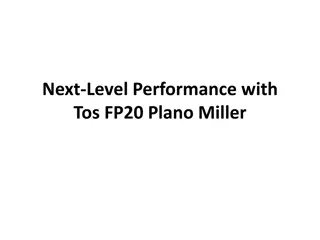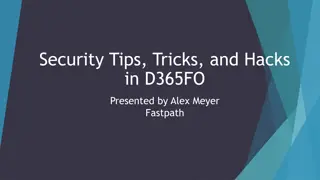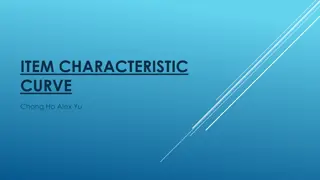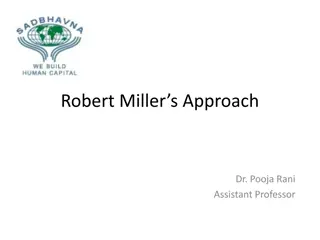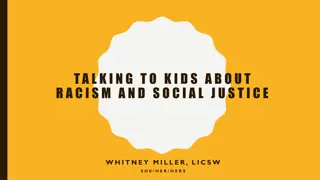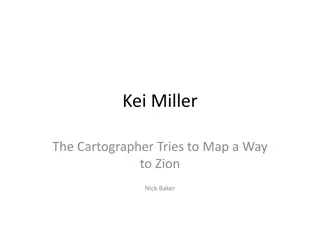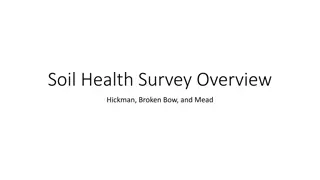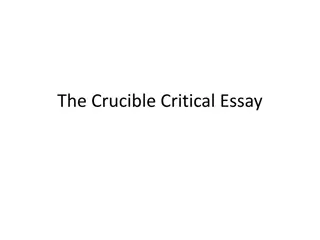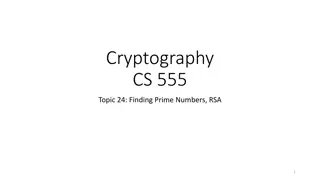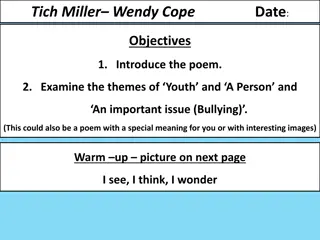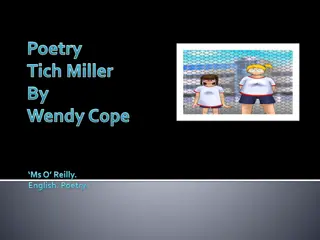
Automatic Modal Shifting Using Chromagrams & a CNN
Explore how modal shifting alters pitches and chord tonalities in music with the help of chromagrams and a convolutional neural network (CNN). Learn the design considerations, pitch detection techniques, tonality shifting process, data collection, and training involved in this innovative approach.
Download Presentation

Please find below an Image/Link to download the presentation.
The content on the website is provided AS IS for your information and personal use only. It may not be sold, licensed, or shared on other websites without obtaining consent from the author. If you encounter any issues during the download, it is possible that the publisher has removed the file from their server.
You are allowed to download the files provided on this website for personal or commercial use, subject to the condition that they are used lawfully. All files are the property of their respective owners.
The content on the website is provided AS IS for your information and personal use only. It may not be sold, licensed, or shared on other websites without obtaining consent from the author.
E N D
Presentation Transcript
Automatic Modal Shifting Using Chromagrams & a CNN By Miller Hickman and Alex Mancuso
What is Modal Shifting? Changing the pitches and chord tonalities of a given song to match another mode E.g. shifting a song in ionian (major) to be in aeolian (minor) https://www.musicnotes.com/now/wp-content/uploads/Modes-White-Keys-1.png Mode: the way notes are spaced in a scale Tonality: the quality of a chord (major, minor, diminished, etc.) http://professionalcomposers.com/wp-content/uploads/2020/10/Chord- Chart-for-All-7-Modes-Triad-Chords.png
Design Considerations Goal Input has to be individual, separated stems Works best with synthesizer tones Input needs to be free of embellishments (bends) Chords are limited to Major, Minor, Diminished 7th chords included No inversions Original key & mode + target key & mode are defined by the user Shift the stems of a song from one key and mode to another
Pitch Detection and Chord Extraction Used a chromagram calculated through Pitch Class Profile (PCP) from Constant-Q Transform, using kernels and FFT Distinct streams were counted as separate events Pychord library used to extract chord names Music21 library used for chord qualities chord_long.wav
Tonality Shifting CNN based off of U-Net architecture to implicitly shift the tonality of a given chord Task treated similarly to a source separation problem MSE Loss on magnitude spectrogram Separate models trained for each pairwise tonality combination major to minor, minor to diminished, etc.
Data and Training Data collection was a major problem Trained tonality shifting with 6 different synthesizer sounds from PySynth Major to Minor and Minor to Diminished models achieved satisfactory loss and results Only Chords with a root note of C were used for training On inference chords are pitch shifted to C before tonality shifting Unable to achieve respectable loss values with Diminished to Major model
Bringing It All Together Determine Scale Degree in Original Key Read Audio Files Chord Calculate Chromagram Determine desired tonality in new mode Single Pitch Extract Pitches Tonality Shift Retrieve Chord Names/Chord Qualities Pitch Shift
Results Major C (Input) Minor C (Output) Works better for single-note melodies Tonality shifting and chord detection is not accurate enough to demonstrate market usefulness Some artifacts in tonality shifting output Note detection yielded errors when the input contained embellishments Pitch extraction thresholds needed to be adjusted often M_b_48.wav out_minor_48_TEST.wav Minor C (Input) Diminished C (Output) m_e_48.wav out_dimH_48_TEST.wav Major Melody (Input) Minor Melody (Ground Truth) Buddy_Holly_Melody_Minor.wav Buddy_Holly_Melody.wav Melody Through Our Model (Output) Buddy_Holly_Melody.wav
Future Work and Possible Improvements Allowing user input to simply be an audio file Requires source separation More effective Tonality Shifting Wider breadth of timbres for Tonality Shifting Automatic key detection More efficient note detection from chromagram Ability to account for bends, embellishments in note stream detection Including more notes in detection for complex chords
References [1] Brown, Judith & Puckette, Miller. (1992). "An efficient algorithm for the calculation of a constant Q transform". Journal of the Acoustical Society of America. 92. 2698. 10.1121/1.404385. [2] PySynth, PySynth - a Music Synthesizer for Python, https://mdoege.github.io/PySynth/ (accessed Dec. 5, 2022) [3] Q. Xi, R. Bittner, J. Pauwels, X. Ye, and J. P. Bello, "Guitarset: A Dataset for Guitar Transcription", in 19th International Society for Music Information Retrieval Conference, Paris, France, Sept. 2018. [4] Ronneberger, O., Fischer, P., Brox, T. (2015). U-Net: Convolutional Networks for Biomedical Image Segmentation. In: Navab, N., Hornegger, J., Wells, W., Frangi, A. (eds) Medical Image Computing and Computer-Assisted Intervention MICCAI 2015. MICCAI 2015. Lecture Notes in Computer Science(), vol 9351. Springer, Cham. https://doi.org/10.1007/978-3-319-24574-4_28 [5] Stoller, Daniel & Ewert, Sebastian & Dixon, Simon. (2018). Wave-U-Net: A Multi-Scale Neural Network for End-to- End Audio Source Separation.
Input Spectrogram Spectrogram Mask Copy & Concatenate 1D Conv + ReLU 1D Conv + ReLU Max Pooling Up-Conv Copy & Concatenate 1D Conv + ReLU 1D Conv + ReLU Max Pooling Up-Conv 1D Conv + ReLU 1D Conv + ReLU Copy & Concatenate Up-Conv Max Pooling 1D Conv + ReLU 1D Conv + ReLU Copy & Concatenate Max Pooling Up-Conv 1D Conv + ReLU


